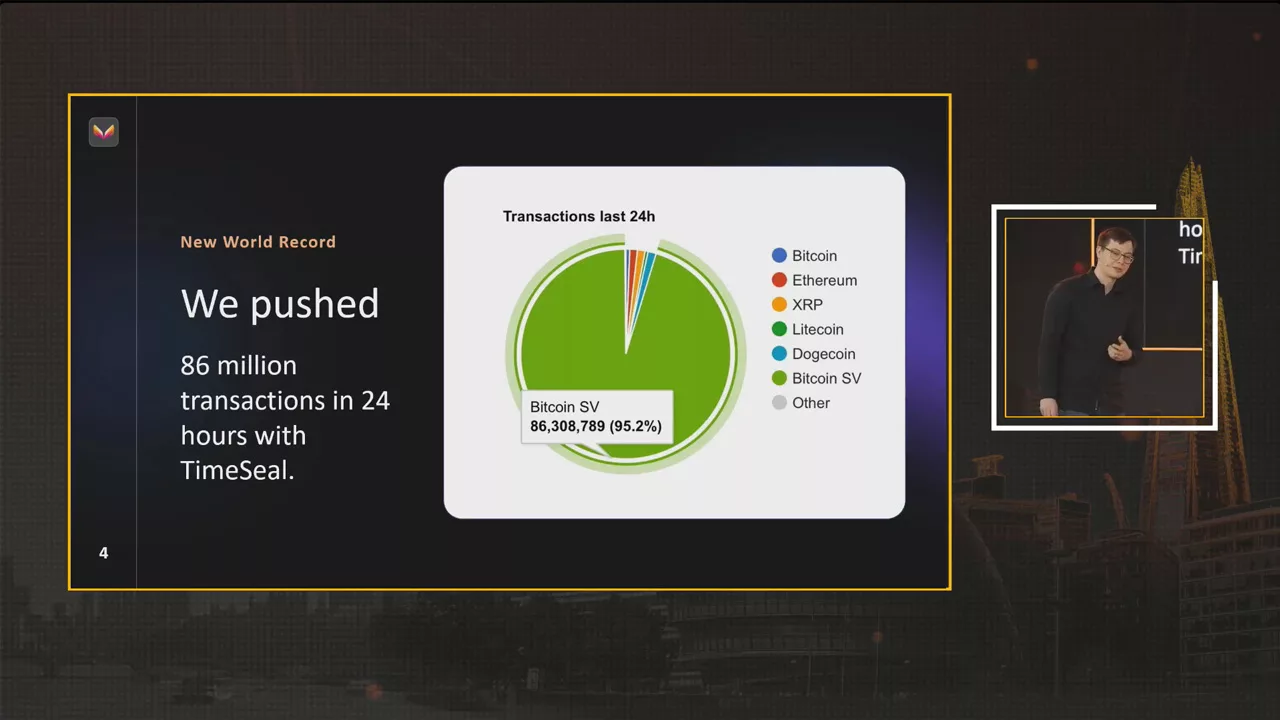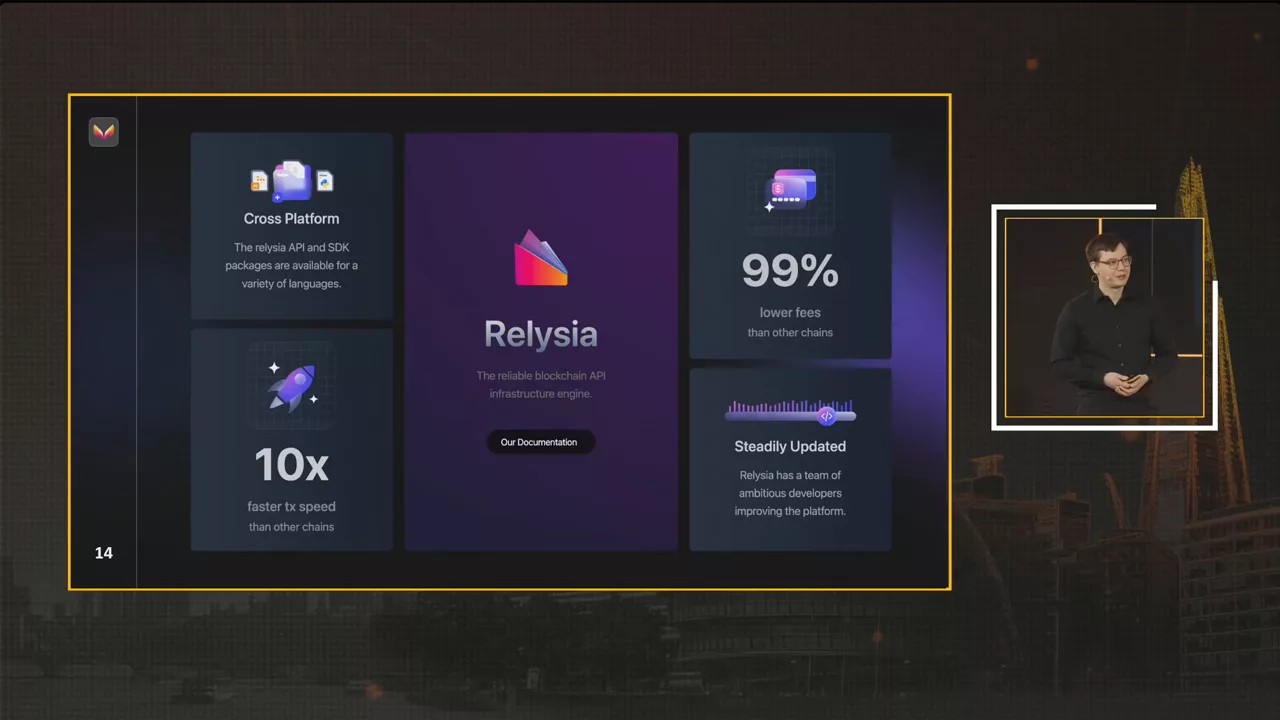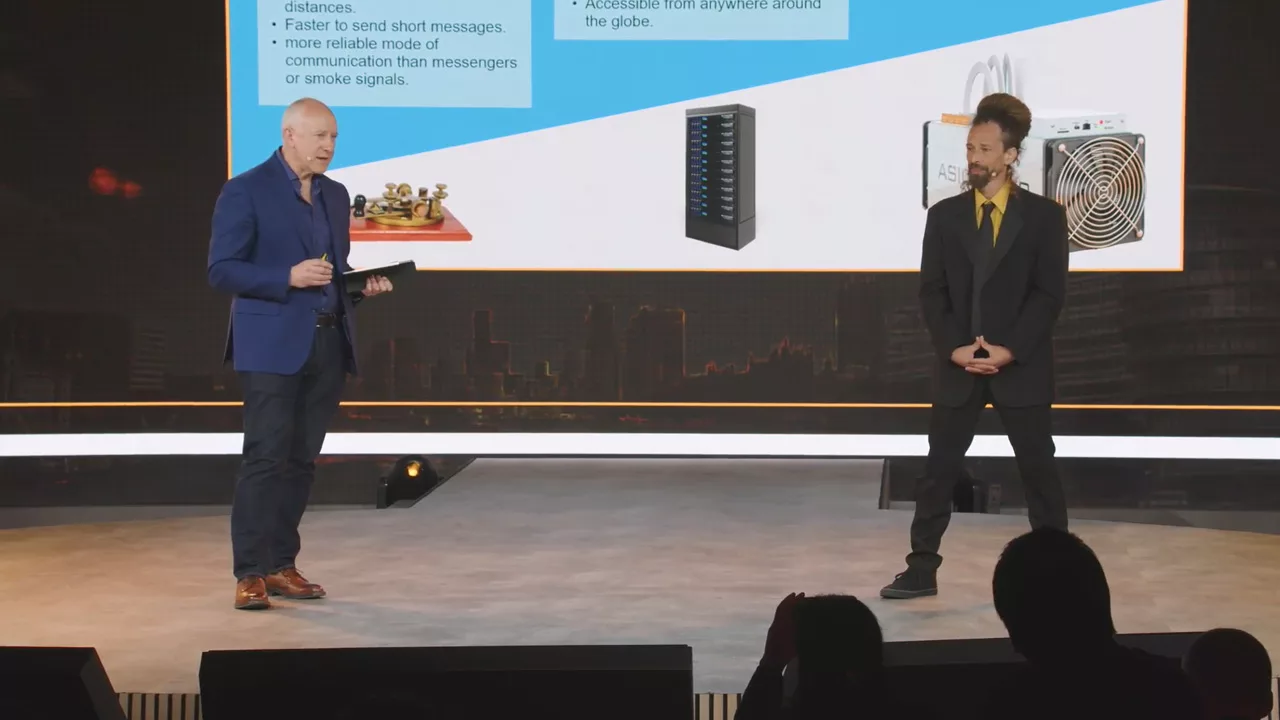Spotlight On at the London Blockchain Conference 2023: Blockchain apps that offer practical utility
[gpt3]rewrite
More than anything else, London Blockchain Conference 2023 is about companies building real tools using blockchain technology. On the final day of the conference, attendees were treated to an insight into two products that aim to change how the world uses – and thinks about – the blockchain.
Simplicity and utility with Vaionex
BSV foundation Vaionex was present at the LBC 2023 business stage to provide an update on several projects the company has been working on.
As co-founder Robin Gounder took the stage, the company’s slogan flashed on the screen in the background: solving blockchain’s biggest problems.
“It’s a bold claim,” Gounder acknowledges, especially given how he frames the core issue—creating worldwide adoption. The key to solving this problem, he said, is twofold: utility and simplicity.
“If there’s no benefit, you wouldn’t integrate [blockchain] at first, he said. “If you have a hugely complex system that provides little utility, you’re not going to get any coverage.”
The BSV blockchain is already proving the utility of some calculations. Gounder highlights the record 86 million transactions that take place on the BSV blockchain in a 24-hour period. The key to setting this record – and the key to continuing to set such records – will be about more than just ordinary payment transactions. Transactions can be smart contracts, micropayments, stablecoin payments.

The reason these transactions take place on the blockchain is fundamental timestamping: it is the essence of the blockchain. But blockchain is about much more than just timestamps (every database has timestamps, says Gounder). It’s about the integrity of that data, those timestamps. The value offered by blockchain is that this data can never be changed.
That’s why Vaionex is introducing TimeSeal – named after the actual benefit of blockchain – a tool that allows users to create blockchain apps in minutes.

“To create real utility, we can’t ask companies to join our blockchain platform. We have to do it the other way around: we have to go to the tools they already use,” Gounder said.
The tool everyone already uses? Traditional databases.
“Therefore, what we did was integrate the blockchain into every major database out there,” he added.
With one click, the blockchain can be integrated into any database, meaning that blockchain platforms are no longer necessary. Neither, says Gounder, is coding. The practical result is that the cost of creating blockchain applications goes from tens of thousands to just $10.
Next, Vaionex Lead Bitcoin Engineer Cain Nussdorfer took over to talk about the STAS BSV smart contract.
“Everybody loves tokens, right? But how we measure tokens on the blockchain is different. Layer 2 tokens, Layer 1 tokens. What STAS tokens are, they’re layer 0. They’re native to the blockchain.”
STAS is essentially a smart contract that represents a token and comes in different templates that can be used in different ways. STAS-20 is the token used by the Swiss franc stablecoin announced by Centi, for example.
STAS-789 is another innovative token that allows new data to be added to the token during its lifetime, adding new data for each subsequent transaction. It makes it possible to create a verifiable record of events in the token.
The first tradable digital token on a network was called 1 alpha. You can use any other digital currency to trade it and get this token. A stable coin that is guaranteed, that you know you can trust. Much different from Tether and other things.
Gounder also showcased Relysia. Relysia is an app that wants to be more than just a wallet – it wants to be an infrastructure unto itself. It has API and SDK packages to help users seamlessly integrate with the blockchain, supports STAS tokens and BSV tokens, and boasts quality-of-life features such as pre-integration fees for each transaction.

“The idea is to be more than a crypto wallet,” Gounder said. “The idea is to be a competitor to PayPal (NASDAQ: PYPL).”
Vaionex’s gaming platform Tegment was also discussed, which integrates into many of the most popular games currently being played. CS:GO and Fortnite were featured, but the platform currently integrates with over 50 games to offer tournaments, leaderboards and other integrations that allow players to bet and earn BSV.
Finally, Gounder discussed NFTana, a free and open source marketplace that allows atomic swaps on the BSV blockchain.
A new blockchain sustainability index with WEB3C02
Also on Day 3, Tokenovate CEO Richard Baker and SmartLedger Development Manager Greg Ward introduced an exciting new development in the world of sustainability: WEB3C02.NET, a blockchain sustainability index that aims to deliver a complete picture of the energy efficiency of digital asset projects.

Baker says it’s a much-needed innovation based on his conversations with companies interested in digital assets, where they all typically come to him with the same question: what is the footprint of these projects?
It is not an easy question to answer precisely, at least using existing paradigms. Baker points out that digital assets are viewed differently in that they rarely measure energy efficiency against production, as you would when measuring emissions in other contexts.
But for blockchain, production is everything: people tend not to care about raw energy consumption as long as the production on the other side is worth it.
“Blockchain is an incredible opportunity for us in terms of transferring value and integrity to data,” says Baker. “We want to see that this gives us output on the other side that is actually going to give us something that the community is going to say is worth the input.”
And as history moves toward a world where blockchain is used as a real-world utility, a new way of looking at energy efficiency is sorely needed.
With WEB3C02, Ward says, “we’re not just taking the raw energy input, but we’re taking into account the block size and transaction throughput of different blockchains.”

Not only will this restore the way we look at blockchain in a vacuum, but it will help compare blockchain’s energy efficiency with older technologies and payment systems.
See: What we need to do is improve business processes step by step
New to Bitcoin? Check out CoinGeeks Bitcoin for beginners section, the ultimate resource guide for learning more about Bitcoin – originally envisioned by Satoshi Nakamoto – and blockchain.
[gpt3]



